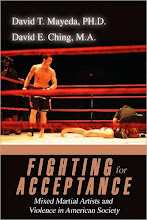 Obviously, the United States has displayed strong interest across the Middle East, heavily focused on issues of national security as troops continue to be deployed across Iraq and Afghanistan, while worries grow about the Taliban and nuclear developments in Pakistan and Iran.
Obviously, the United States has displayed strong interest across the Middle East, heavily focused on issues of national security as troops continue to be deployed across Iraq and Afghanistan, while worries grow about the Taliban and nuclear developments in Pakistan and Iran.The continued involvement of the U.S. military is problematic to say the least, not only in terms of the dangers U.S. troops face (see here), but also in terms of generating increased resentment towards the U.S. from parties in the Middle East.
This is not to say that U.S. involvement should cease entirely. New wars in the post-Cold War era are no longer characterized by violence between military factions. According to Stefan Wolff’s Ethnic Conflict: A Global Perspective, “At the beginning of the twentieth century only about 10 per cent of war casualties were civilians, while by the end of the century the figure was closer to 95 per cent (p. 14).”
Also, new wars are regional, no longer characterized by rigid state boundaries. Hence, the number of internally displaced persons (IDP) within and between countries has been colossal in areas where warlords clash with each other and different government entities.
In some cases, IDPs are killed directly by militant forces in order to obtain revenge, intimidate others, or carry out genocide. But most deaths for IDPs come from malnourishment and disease. From purely a humanitarian standpoint, the U.S. should be involved in preventing global violence that leads to mass civilian casualties and in setting up conflict management systems in cases where violence has already commenced.
Also from a national interest perspective, the U.S. needs to help develop stable non-discriminating governments and economic infrastructure that will dissuade young IDPs from being seduced by organized crime and terrorist groups that offer perceptions of stability, power, and meaning in life.
More from Stefan Wolff:
Ethnic conflicts create instability, refugees, and conditions in which organized crime and increasingly international terrorism can fester (p. 16).
As economic desperation grows, as the gap between rich and poor widens, and as the disparity in development between the developed and developing world increases, religious fundamentalism and criminal intent will fall on fertile ground and exploit existing inter-ethnic tensions to build themselves political and territorial power bases from which to operate (p. 206).
The conflicts do not have to be inter-ethnic; they can be intra-ethnic as well (or have a mix of inter/intra-ethnic conflicts). In Pakistan’s Swat Valley, 1.5 million people have been displaced due to fighting between the Taliban and Pakistani military. This NPR report quotes a Pakistani refugee who states, “‘all this misery is happening’ because politicians ‘have not tended to the poor,’ whom she says are easy prey for Taliban recruiters.” And it’s not just the Middle East.
As I wrote before regarding Somalia, well over 250,000 Somali IDPs are congregated in over-crowded Kenyan refugee camps – obvious venues for criminal/terrorist recruitment. However, it appears recruitment may not be limited to Somalia and its neighbors. I recently attended an outstanding social services conference in Minnesota, where I learned a major Somali community has developed.
Not surprisingly young Somali refugees are frequently experiencing difficulties integrating into Minnesota schools, for a variety of reasons (e.g., discrimination, lack of educational background). With this stratification that begins on a global level and then continues in Minnesota schools, a small minority of the youthful Somali population is then seduced by extremism. From NPR:
New Somalis are arriving in Minneapolis all the time, and many begin their high school careers in what is essentially a Somali phonics class. A lot of the new Somali students are illiterate. So they basically sound out Somali words on the board — as first-graders might do in this country. As a result, in many ways, they have become isolated even in their own high school.
[…]
The bad news is that the isolation of the Somali community has made its members vulnerable to radical ideas.
“We have seen a very, very small percentage who have come to identify with extremists in Somalia, be they al-Shabab or potentially elements of al-Qaida”…
And then there is Sri Lanka, where the conflict is inter-ethnic, and where the U.S. is completely hands-off (including the mainstream media). In the aftermath of the Liberation Tigers of Tamil Eelam’s (LTTE) defeat, 250,000 Tamils have been displaced. Little doubt, the discrimination cast upon Sri Lanka’s Tamil minority over the past half century is continuing with the Sinhalese victory.
Many in the Tamil diaspora express their anger and/or sorrow, and foresee a bleak future for Tamils in Sri Lanka:
…I feel the Sinhalese want to raze the identity of Tamils. They have occupied Kilinochchi. That is our place. In five years time they will change the name of that town to a Sinhalese name.
They will build Buddhist temples and take Sinhalese migrants to that area. They want the whole nation to be Buddhist and Sinhalese.
Among the few international leaders paying attention to the Sri Lankan conflict, some have argued that the Sinhalese majority must provide Tamils with greater access to forms of power. The BBC reports the following from Erik Solheim, Norwegian Minister for International Development:
“If the Sri Lankan government can show generosity in victory, give a substantial devolution of power to Tamil self-government in the north-east and create an inclusive state for the Tamil, Sinhalese and Muslims, then we may see a lasting solution to the Sri Lankan problem,” he said.
But the Sri Lankan government says it is working on a political solution and it requires time to evolve a consensus among political parties in the south.
The more time taken, the longer Tamils wallow in impoverished conditions, the more they can cite systemic discrimination, and the more attractive extremist groups become for those suffering.
Yet in many of the conflicts existing outside of the Middle East and that don’t appear to affect the U.S. immediately, the U.S. attitude is “let them work it out” (e.g., Sri Lanka, Darfur). But as Stefan Wolff suggests, this hands-off attitude will not bode well for the U.S. over the long haul, and certainly not for the victims in those regions right now.
The answer is not increased militarism. The case of Afghanistan applies here. While most Afghanis are not pro-Taliban, recent U.S. air strikes that may have killed up to 140 innocent civilians have done little to maintain Afghani anti-Taliban sentiments. “The Afghan government concluded 140 were killed, most of them children. It says more than two dozen were injured.”
Diplomatic concessions need to take place that insure minorities’ equal rights to work, political representation, education, and useable land, and the U.S. needs to be involved. Relative to past leadership, the Obama Administration has been fairly adamant about Israel coming to terms with Palestinian secession.
Yet despite President Obama’s recent meeting with Israeli Prime Minister Benjamin Netanyahu that called for a two-state solution, Israel’s expansion into Palestinian land is not subsiding. Where will the U.S. stand on these and other issues in which minorities across the globe continue to be exploited?
As climate change continues to shift access to agricultural resources and the global economic crisis persists, we can expect an increase in collective violence in developing countries. To think that the U.S. and other developed countries will not be affected by this is violence ludicrous. Preventative diplomacy must not be delayed.
(Photo courtesy of NPR).
Update from today - Fierce battle in Somali Capital










SOMALIA: Exodus continues despite lull in Mogadishu fighting (5/22/09)
ReplyDeletehttp://www.irinnews.org/Report.aspx?ReportId=84483
NIGERIA: Thousands flee violence, hundreds suspected dead (5/22/09)
http://www.irinnews.org/Report.aspx?ReportId=84512
DRC: Attacks against civilians and aid workers increase in the east (5/22/09)
http://www.irinnews.org/Report.aspx?ReportId=84506
Sri Lankan Officials Kill Rebel Leader, End Civil War (5/22/09 podcast, good discussion)
ReplyDeletehttp://www.npr.org/templates/story/story.php?storyId=104429492